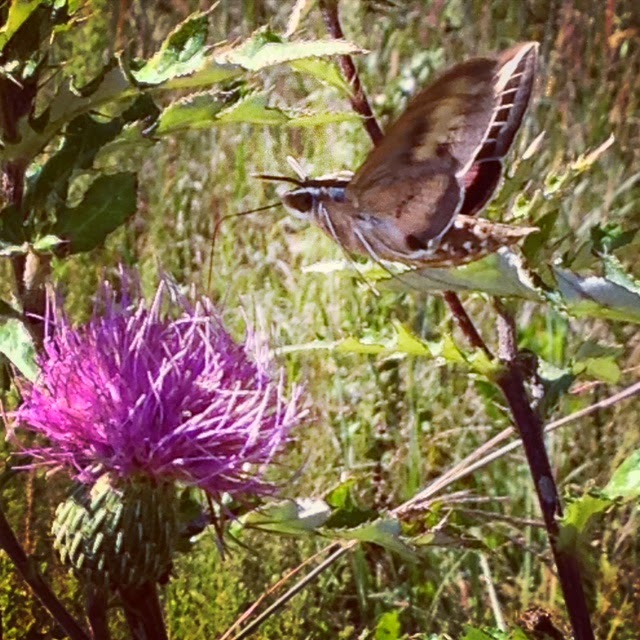 |
| Gayfeather on the dunes |
I spent the end of last week down in San Marcos giving a
"Monarchs 101" talk to agency personnel. My monarch talk was
something of an opportunistic afterthought, appended to an existing gathering of
the
Gulf Coast Prairie Landscape Conservation Cooperative (GCP LCC). This organization was formed as a collaborative effort, driven by the Department of the Interior, to protect the Gulf Coast Prairie from threats including climate change and urbanization. Because Texas' geographic extent encompasses the funnel through which the majority of migratory monarchs pass every spring and fall, and because the Feds have been under a lot of pressure to develop a strategy to save
the monarch butterfly migration, the GCP LCC and their partners are tackling this issue. I was brought in to provide an overview of monarch biology.
I've discussed monarchs and other milkweed butterflies
before in this blog.
It's easy to forget about the coastal prairies up here in the Great Plains. After living in Nebraska, it's a stretch to imagine a tall grass prairie within earshot of the surf, but I've seen it. Last November I stopped off in Corpus Christi to visit Padre Island on my way to the Texas Butterfly Festival. There I found tall grass species commingling with yucca and hardy halophytes.
 |
|
As the southern-most extension of the tall grass prairie, you recognize seemingly misplaced familiar plants. I noticed little bluestem and gayfeather, among others. You also get coastal species, like sea oats and fleshy succulent forbs. It sure felt tropical-- my leeward arm was entirely coated in mosquitoes. Luckily, I was wearing a thick wool sweater over a flannel shirt. All I could think was "malaria, yellow fever". Prior to eradication efforts, visiting coastal Texas must have been a real gamble. I spent a summer as a research assistant in the salt marshes of coastal Virginia, but I've never seen mosquitoes like that.
 |
| A tallgrass dune system |
The gulf coast prairies are also unusual because they exist in a land that receives more than enough rain to support forests and other vegetation. You can find these prairies from Lafayette, Louisiana to south Texas. Supposedly, edaphic (soil) characteristics and fire maintained these grasslands' open canopy. I would guess that salinity in the water table also prevents trees from getting established.
 |
| crested caracara |
Corpus Christi is far enough south that you get some semi-tropical birds. In fact, Padre Island is renowned for birding. The National Park Service website claims that Corpus Christi won the "birdiest city" award for 10 consecutive years. You get both winter residents and migrants. It is one of the richest areas for birding in North America. Obsessive birders travel from all over to get 'lifers'.
I didn't do much birding, but I saw a pair of crested caracaras gliding and diving in the dunes. These funky raptors are most closely related to falcons, but they live like vultures. They are inefficient hunters, and prefer carrion and thievery to catching their own dinner. They also look like they are wearing poorly fitted toupees. This 'bad wig' effect, combined with their pink faces, make them look rather non-threatening for a bird of prey. Their range barely extends into the US. The crested caracara heartland is Central America and northern South America.
 |
| This bird doesn't mind the seaweed |
Another distinctive facet of the Gulf Coast Prairies is their exposure to the by-products of petroleum exploitation. When I asked native Texans about the beaches, their responses tended towards "Eh." A friend of mine reminisced about digging tar balls on the beach as a child. Additionally, something about the rotation of the Gulf Coast gyre leads to heavy trash and seaweed accumulation. The Padre Island entry booth had signs posting the tides, the flag warning, and the levels of trash and debris on the beach. It's a shame, but the birds still come. If you want to add to your life list, or see a unique prairie system, it's still worth a trip.
 |
| Pelican and cormorants hanging out in the surf |


























